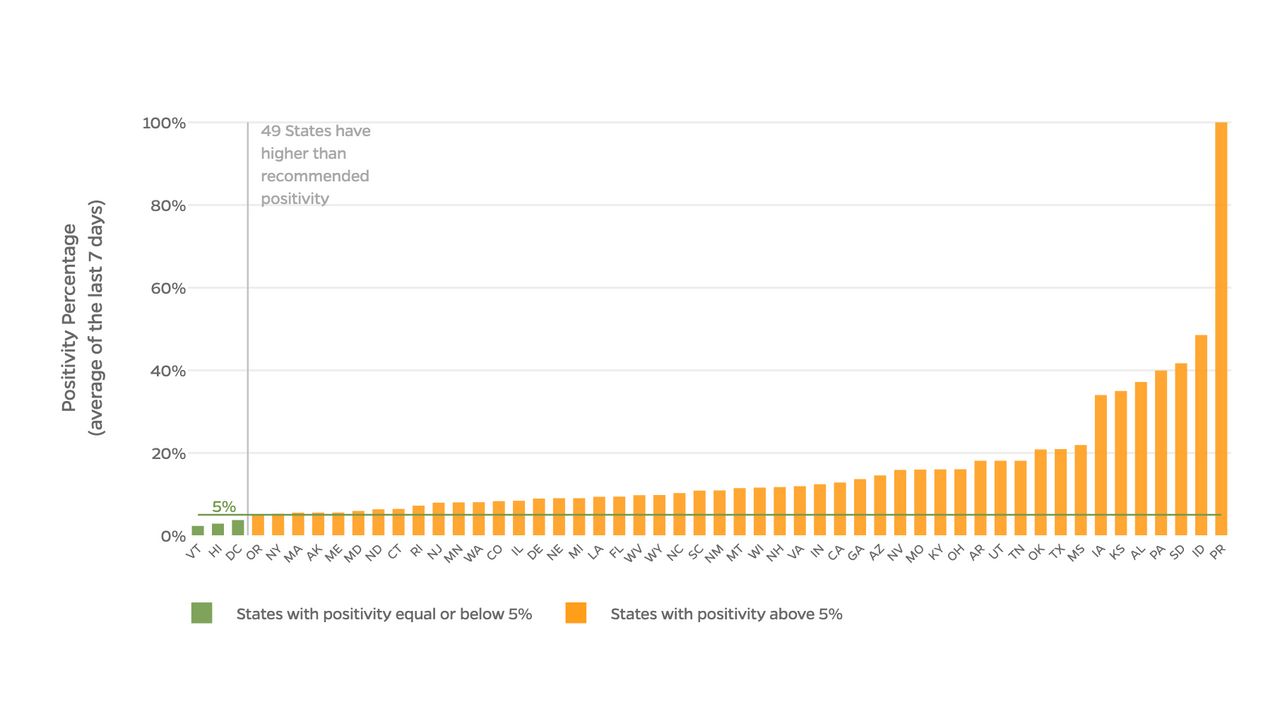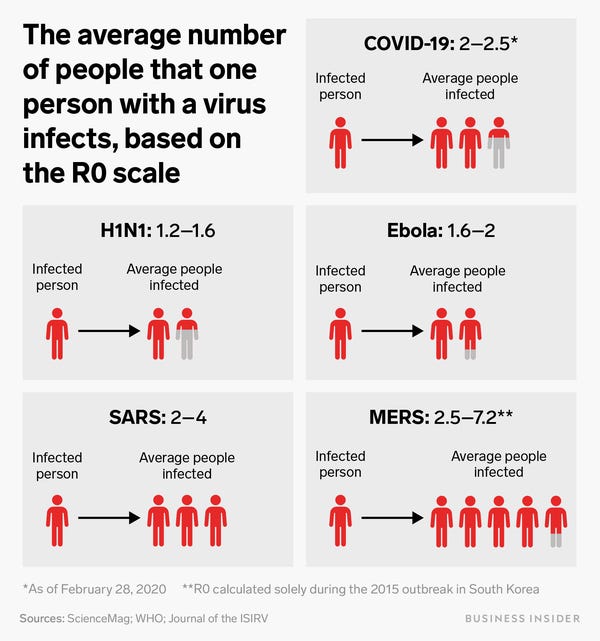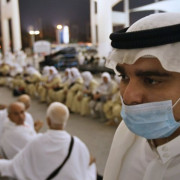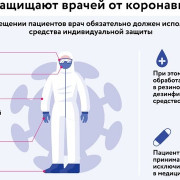Tracking
Содержание:
- Kids and families can reduce coronavirus risk together
- Cumulative Cases By Date
- About this page:
- Latest News & Resources
- Latest News & Resources
- Latest News & Resources
- Testing Insights
- Preparing for a Spike or Second Wave of Coronavirus in Your Area
- Latest News & Resources
- Will we still need to wear masks and practice physical distancing once a vaccine is available?
Though COVID-19 seems to have less serious health consequences for children than for adults, it is important to avoid infection among children, ensure they get their flu shots and other vaccinations, be on the lookout for serious disease in kids, and help prevent the virus from spreading.
Families with children can encourage these precautions:
Cough and sneeze with care. “Encourage everyone in the family to cough and sneeze into their elbow, instead of their hands, and to wash their hands after each time this occurs,” Milstone says. “Throw away tissues after they are used,” he adds.
Keep hands off faces. Parents should remind children to avoid touching their face as much as possible. Milstone says it can help if kids carry a toy that will keep their hands busy, but he notes that parents should wash those toys regularly.
Keep things clean. Wipe down toys and surfaces your child touches regularly, especially when traveling or when near a person who is sick. Clean surfaces at home and store cleaners in cabinets that are either too high for your child to reach or are secured with childproof cabinet locks. (More cleaning recommendations are available from the Centers for Disease Control and Prevention.)
Address anxiety and stress. Talking things over as a family can help identify specific fears and clarify the facts. It also helps for families to discuss a plan in case someone gets sick or something else happens that interrupts the normal routine.
“Children will look to you when deciding how to feel about COVID-19. If you feel calm and prepared, they are likely to feel similarly,” Milstone notes.
Cumulative Cases By Date
For the twenty countries with the highest absolute daily number of deaths, the lines below show the cumulative number of cases or deaths reported in that country at each date in time. Use the two dropdown menus to see either confirmed cases or deaths (absolute numbers or per 100,000 population), and linear or logarithmic scales. Increases in deaths may happen two or more weeks after the corresponding increase in cases, but the number of deaths may be more reliable than confirmed cases because deaths are more likely to be accurately reported. The logarithmic scale helps visualize early exponential growth.
United States
Yesterday’s data (12/23/2020)
New Cases: 195,033
Deaths: 3,401
The first case of COVID-19 in United States was reported 335 days ago on 1/22/2020. Yesterday, the country reported 195,033 new confirmed cases and 3,401 deaths.
Brazil
Yesterday’s data (12/23/2020)
New Cases: 55,202
Deaths: 968
The first case of COVID-19 in Brazil was reported 300 days ago on 2/26/2020. Yesterday, the country reported 55,202 new confirmed cases and 968 deaths.
United Kingdom
Yesterday’s data (12/23/2020)
New Cases: 36,931
Deaths: 691
The first case of COVID-19 in United Kingdom was reported 326 days ago on 1/31/2020. Yesterday, the country reported 36,931 new confirmed cases and 691 deaths.
Russia
Yesterday’s data (12/23/2020)
New Cases: 28,340
Deaths: 551
The first case of COVID-19 in Russia was reported 326 days ago on 1/31/2020. Yesterday, the country reported 28,340 new confirmed cases and 551 deaths.
Germany
Yesterday’s data (12/23/2020)
New Cases: 36,153
Deaths: 986
The first case of COVID-19 in Germany was reported 330 days ago on 1/27/2020. Yesterday, the country reported 36,153 new confirmed cases and 986 deaths.
India
Yesterday’s data (12/23/2020)
New Cases: 23,950
Deaths: 333
The first case of COVID-19 in India was reported 327 days ago on 1/30/2020. Yesterday, the country reported 23,950 new confirmed cases and 333 deaths.
Turkey
Yesterday’s data (12/23/2020)
New Cases: 19,256
Deaths: 251
The first case of COVID-19 in Turkey was reported 286 days ago on 3/11/2020. Yesterday, the country reported 19,256 new confirmed cases and 251 deaths.
Italy
Yesterday’s data (12/23/2020)
New Cases: 13,316
Deaths: 628
The first case of COVID-19 in Italy was reported 326 days ago on 1/31/2020. Yesterday, the country reported 13,316 new confirmed cases and 628 deaths.
France
Yesterday’s data (12/23/2020)
New Cases: 11,861
Deaths: 802
The first case of COVID-19 in France was reported 333 days ago on 1/24/2020. Yesterday, the country reported 11,861 new confirmed cases and 802 deaths.
Colombia
Yesterday’s data (12/23/2020)
New Cases: 12,526
Deaths: 251
The first case of COVID-19 in Colombia was reported 291 days ago on 3/6/2020. Yesterday, the country reported 12,526 new confirmed cases and 251 deaths.
View all
About this page:
This page was last updated on Wednesday, December 23, 2020 at 03:00 AM EST.
How is the outbreak growing?
Seeing the total number of cases over time, on a country-by-country basis, can illustrate how the pandemic is expanding. These charts show cumulative cases – for instance, the number of people who have ever tested positive for coronavirus in a given country, regardless of whether they have recovered. An upward bend in a curve can indicate either a time of explosive growth of coronavirus cases in a given country or a change in how cases are defined or counted. Comparing across countries can also show where the pandemic is growing most rapidly at any point in time.
Latest News & Resources
c http-equiv=»Content-Type» content=»text/html;charset=UTF-8″>lass=»NewsFeed_controls__1de3n»>
New
Vaccines are finally starting to roll out, but the virus is spreading faster than ever — and killing thousands of Americans daily.
The Moderna coronavirus vaccine was recommended for emergency authorization by an FDA panel, following the FDA approval of the Pfizer vaccine last week
Friday December 18, 2020 12:00-1:00 ET
As the pandemic surges to dangerous, record-breaking levels, we are launching the first in a series of bi-weekly webcast briefings on the CRC this coming Friday at noon. The series will provide timely, accessible updates on the state of the pandemic and public health responses, and will offer opportunities for live Q&A with leading experts from the Johns Hopkins Coronavirus Resource Center.
The U.S. death toll from the coronavirus topped 300,000 Monday just as the country began dispensing COVID-19 shots in a monumental campaign to conquer the pandemic.
Health care workers around the country rolled up their sleeves for the first COVID-19 shots Monday as hope that an all-out vaccination effort can defeat the coronavirus smacked up against the heartbreaking reality of 300,000 U.S. deaths.
As coronavirus deaths soar across the country, deaths in communities that are home to colleges have risen faster than the rest of the nation.
Over the next six months, the U.S. hopes to distribute enough doses of the coronavirus vaccine to reach the arm of every American.
Friday December 11, 2020 12:00-12:30 ET
As the pandemic surges to dangerous, record-breaking levels, we are launching the first in a series of bi-weekly webcast briefings on the CRC this coming Friday at noon. The series will provide timely, accessible updates on the state of the pandemic and public health responses, and will offer opportunities for live Q&A with leading experts from the Johns Hopkins Coronavirus Resource Center.
Reducing the spread of COVID-19 over the next several months — while vaccines are being distributed — has the potential to save more than 100,000 American lives.
Pfizer’s COVID-19 vaccine candidate offers some protection after the first dose, with nearly full protection after the second dose.
Dr. William Moss, executive director of the International Vaccine Access Center at Johns Hopkins University, encouraged anyone who has already tested positive for COVID-19 to get vaccinated once a vaccine becomes available.
With the arrival of December, it’s now clear the winter surge of the pandemic is materializing in many of the ways that the country’s top scientists and health care leaders feared.
Friday December 4, 2020 12:00-12:30 ET
As the pandemic surges to dangerous, record-breaking levels, we are launching the first in a series of bi-weekly webcast briefings on the CRC this coming Friday at noon. The series will provide timely, accessible updates on the state of the pandemic and public health responses, and will offer opportunities for live Q&A with leading experts from the Johns Hopkins Coronavirus Resource Center.
Though the agency has issued all of the recommendations in earlier guidance, the new summary represents the first time the C.D.C. published a multi-pronged list of strategies for states, a sort of battle plan.
Experts emphasize the importance of transparent messaging in ensuring wide public acceptance and completion of vaccination regimens.
Latest News & Resources
c http-equiv=»Content-Type» content=»text/html;charset=UTF-8″>lass=»NewsFeed_controls__1de3n»>
New
Vaccines are finally starting to roll out, but the virus is spreading faster than ever — and killing thousands of Americans daily.
The Moderna coronavirus vaccine was recommended for emergency authorization by an FDA panel, following the FDA approval of the Pfizer vaccine last week
Friday December 18, 2020 12:00-1:00 ET
As the pandemic surges to dangerous, record-breaking levels, we are launching the first in a series of bi-weekly webcast briefings on the CRC this coming Friday at noon. The series will provide timely, accessible updates on the state of the pandemic and public health responses, and will offer opportunities for live Q&A with leading experts from the Johns Hopkins Coronavirus Resource Center.
The U.S. death toll from the coronavirus topped 300,000 Monday just as the country began dispensing COVID-19 shots in a monumental campaign to conquer the pandemic.
Health care workers around the country rolled up their sleeves for the first COVID-19 shots Monday as hope that an all-out vaccination effort can defeat the coronavirus smacked up against the heartbreaking reality of 300,000 U.S. deaths.
As coronavirus deaths soar across the country, deaths in communities that are home to colleges have risen faster than the rest of the nation.
Over the next six months, the U.S. hopes to distribute enough doses of the coronavirus vaccine to reach the arm of every American.
Friday December 11, 2020 12:00-12:30 ET
As the pandemic surges to dangerous, record-breaking levels, we are launching the first in a series of bi-weekly webcast briefings on the CRC this coming Friday at noon. The series will provide timely, accessible updates on the state of the pandemic and public health responses, and will offer opportunities for live Q&A with leading experts from the Johns Hopkins Coronavirus Resource Center.
Reducing the spread of COVID-19 over the next several months — while vaccines are being distributed — has the potential to save more than 100,000 American lives.
Pfizer’s COVID-19 vaccine candidate offers some protection after the first dose, with nearly full protection after the second dose.
Dr. William Moss, executive director of the International Vaccine Access Center at Johns Hopkins University, encouraged anyone who has already tested positive for COVID-19 to get vaccinated once a vaccine becomes available.
With the arrival of December, it’s now clear the winter surge of the pandemic is materializing in many of the ways that the country’s top scientists and health care leaders feared.
Friday December 4, 2020 12:00-12:30 ET
As the pandemic surges to dangerous, record-breaking levels, we are launching the first in a series of bi-weekly webcast briefings on the CRC this coming Friday at noon. The series will provide timely, accessible updates on the state of the pandemic and public health responses, and will offer opportunities for live Q&A with leading experts from the Johns Hopkins Coronavirus Resource Center.
Though the agency has issued all of the recommendations in earlier guidance, the new summary represents the first time the C.D.C. published a multi-pronged list of strategies for states, a sort of battle plan.
Experts emphasize the importance of transparent messaging in ensuring wide public acceptance and completion of vaccination regimens.
Latest News & Resources
c http-equiv=»Content-Type» content=»text/html;charset=UTF-8″>lass=»NewsFeed_controls__1de3n»>
New
Vaccines are finally starting to roll out, but the virus is spreading faster than ever — and killing thousands of Americans daily.
The Moderna coronavirus vaccine was recommended for emergency authorization by an FDA panel, following the FDA approval of the Pfizer vaccine last week
Friday December 18, 2020 12:00-1:00 ET
As the pandemic surges to dangerous, record-breaking levels, we are launching the first in a series of bi-weekly webcast briefings on the CRC this coming Friday at noon. The series will provide timely, accessible updates on the state of the pandemic and public health responses, and will offer opportunities for live Q&A with leading experts from the Johns Hopkins Coronavirus Resource Center.
The U.S. death toll from the coronavirus topped 300,000 Monday just as the country began dispensing COVID-19 shots in a monumental campaign to conquer the pandemic.
Health care workers around the country rolled up their sleeves for the first COVID-19 shots Monday as hope that an all-out vaccination effort can defeat the coronavirus smacked up against the heartbreaking reality of 300,000 U.S. deaths.
As coronavirus deaths soar across the country, deaths in communities that are home to colleges have risen faster than the rest of the nation.
Over the next six months, the U.S. hopes to distribute enough doses of the coronavirus vaccine to reach the arm of every American.
Friday December 11, 2020 12:00-12:30 ET
As the pandemic surges to dangerous, record-breaking levels, we are launching the first in a series of bi-weekly webcast briefings on the CRC this coming Friday at noon. The series will provide timely, accessible updates on the state of the pandemic and public health responses, and will offer opportunities for live Q&A with leading experts from the Johns Hopkins Coronavirus Resource Center.
Reducing the spread of COVID-19 over the next several months — while vaccines are being distributed — has the potential to save more than 100,000 American lives.
Pfizer’s COVID-19 vaccine candidate offers some protection after the first dose, with nearly full protection after the second dose.
Dr. William Moss, executive director of the International Vaccine Access Center at Johns Hopkins University, encouraged anyone who has already tested positive for COVID-19 to get vaccinated once a vaccine becomes available.
With the arrival of December, it’s now clear the winter surge of the pandemic is materializing in many of the ways that the country’s top scientists and health care leaders feared.
Friday December 4, 2020 12:00-12:30 ET
As the pandemic surges to dangerous, record-breaking levels, we are launching the first in a series of bi-weekly webcast briefings on the CRC this coming Friday at noon. The series will provide timely, accessible updates on the state of the pandemic and public health responses, and will offer opportunities for live Q&A with leading experts from the Johns Hopkins Coronavirus Resource Center.
Though the agency has issued all of the recommendations in earlier guidance, the new summary represents the first time the C.D.C. published a multi-pronged list of strategies for states, a sort of battle plan.
Experts emphasize the importance of transparent messaging in ensuring wide public acceptance and completion of vaccination regimens.
Testing Insights
Johns Hopkins experts are working to fill the void of publicly accessible COVID-19 testing data. This initiative reflects an interdisciplinary collaboration between several groups at Johns Hopkins University: The Bloomberg School of Public Health, Applied Physics Laboratory, Center for Health Security, Center for Systems Science and Engineering (CSSE) in the Whiting School of Engineering, and the Centers for Civic Impact, with generous support from Bloomberg Philanthropies and the Stavros Niarchos Foundation.

The World Health Organization recommends that states strive for 3-12% test positivity, as an indicator that states are conducting enough tests. Which states are testing enough to meet this goal?
Doctors, clinics and hospitals recognize that more COVID-19 surges are likely to occur. They are working with manufacturers to stock up on equipment, and they are continuing their policies for protecting patients and staff members.
Here’s what you can do now:
- Continue to practice COVID-19 precautions, such as physical distancing, hand-washing and mask-wearing.
- Stay in touch with local health authorities, who can provide information if COVID-19 cases begin to increase in your city or town.
- Make sure your household maintains two weeks’ worth of food, prescription medicines and supplies.
- Work with your doctor to ensure that everyone in your household, especially children, is up to date on vaccines, including this year’s flu shot.
Latest News & Resources
c http-equiv=»Content-Type» content=»text/html;charset=UTF-8″>lass=»NewsFeed_controls__1de3n»>
Show Me
All Topics
Filter By
All
New
Vaccines are finally starting to roll out, but the virus is spreading faster than ever — and killing thousands of Americans daily.
The Moderna coronavirus vaccine was recommended for emergency authorization by an FDA panel, following the FDA approval of the Pfizer vaccine last week
Friday December 18, 2020 12:00-1:00 ET
As the pandemic surges to dangerous, record-breaking levels, we are launching the first in a series of bi-weekly webcast briefings on the CRC this coming Friday at noon. The series will provide timely, accessible updates on the state of the pandemic and public health responses, and will offer opportunities for live Q&A with leading experts from the Johns Hopkins Coronavirus Resource Center.
The U.S. death toll from the coronavirus topped 300,000 Monday just as the country began dispensing COVID-19 shots in a monumental campaign to conquer the pandemic.
Health care workers around the country rolled up their sleeves for the first COVID-19 shots Monday as hope that an all-out vaccination effort can defeat the coronavirus smacked up against the heartbreaking reality of 300,000 U.S. deaths.
As coronavirus deaths soar across the country, deaths in communities that are home to colleges have risen faster than the rest of the nation.
Over the next six months, the U.S. hopes to distribute enough doses of the coronavirus vaccine to reach the arm of every American.
Friday December 11, 2020 12:00-12:30 ET
As the pandemic surges to dangerous, record-breaking levels, we are launching the first in a series of bi-weekly webcast briefings on the CRC this coming Friday at noon. The series will provide timely, accessible updates on the state of the pandemic and public health responses, and will offer opportunities for live Q&A with leading experts from the Johns Hopkins Coronavirus Resource Center.
Reducing the spread of COVID-19 over the next several months — while vaccines are being distributed — has the potential to save more than 100,000 American lives.
Pfizer’s COVID-19 vaccine candidate offers some protection after the first dose, with nearly full protection after the second dose.
Dr. William Moss, executive director of the International Vaccine Access Center at Johns Hopkins University, encouraged anyone who has already tested positive for COVID-19 to get vaccinated once a vaccine becomes available.
With the arrival of December, it’s now clear the winter surge of the pandemic is materializing in many of the ways that the country’s top scientists and health care leaders feared.
Will we still need to wear masks and practice physical distancing once a vaccine is available?
We will still need to wear masks and practice physical distancing until a large proportion of the population is vaccinated and we are sure the vaccine provides long-term protection. Initially, we will not have enough vaccine to vaccinate everyone who wants the vaccine and the virus will still be transmitted.
Although the phase 3 clinical trials are designed to determine whether vaccinated individuals are protected against disease, it will also be important to understand whether vaccinated individuals are less likely to transmit the virus. This is likely but not ensured. If a vaccine not only protects against disease but reduces transmission, and continues to do so for many years, we are likely to reach a state of herd protection when masks and physical distancing will no longer be required. Herd protection is achieved when a sufficient proportion of the population is made non-infectious through vaccination or natural infection so that the likelihood of an infectious individual transmitting to a susceptible individual is very low.



